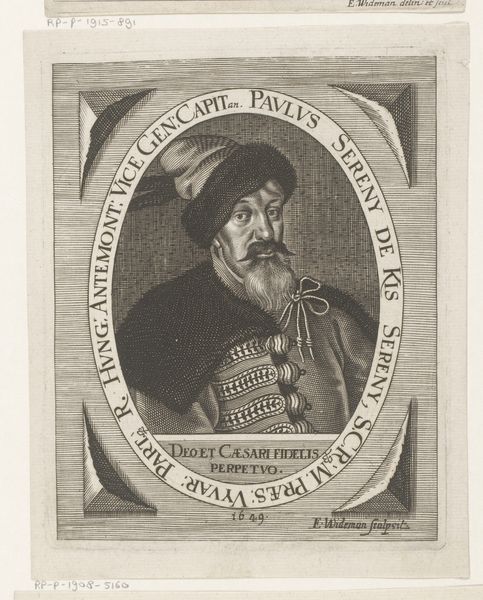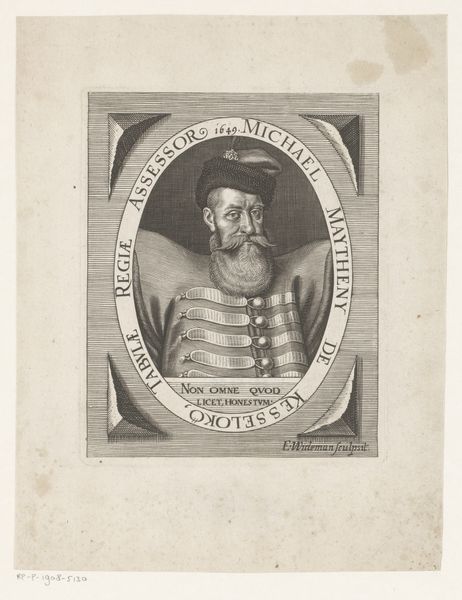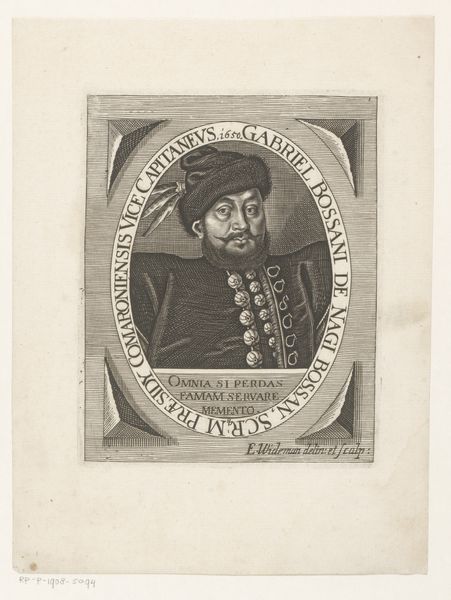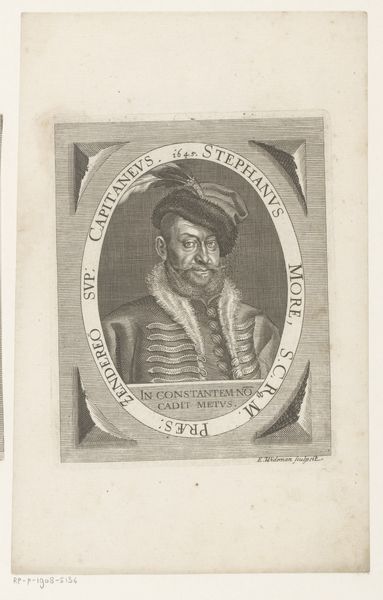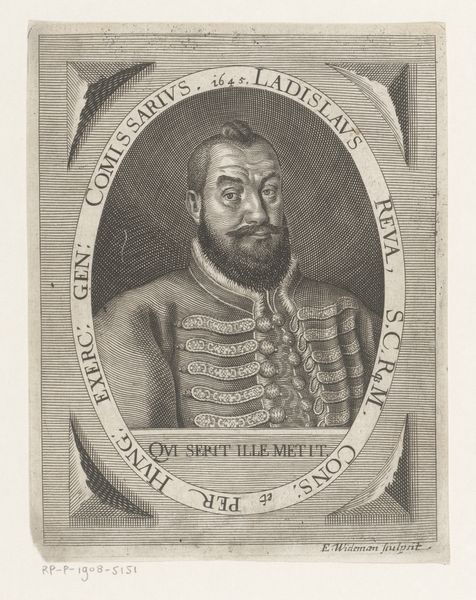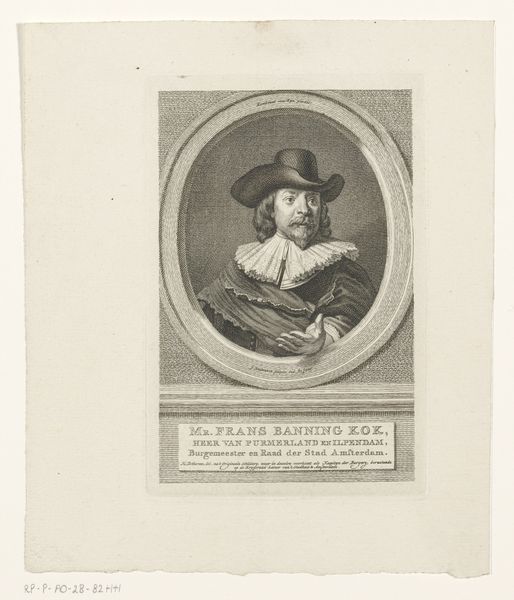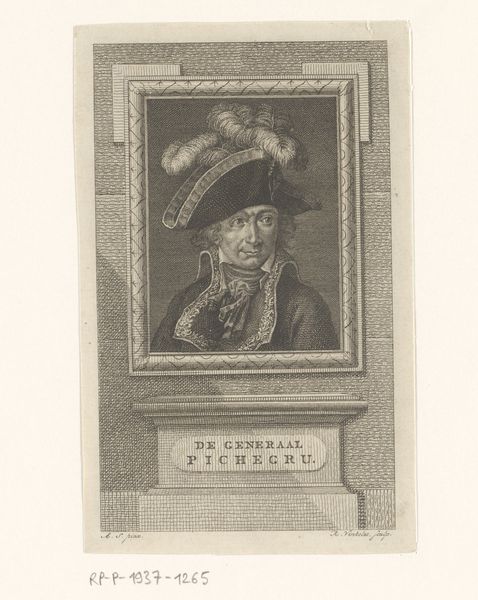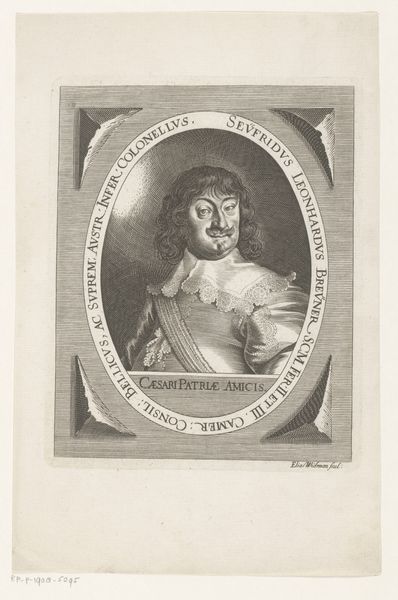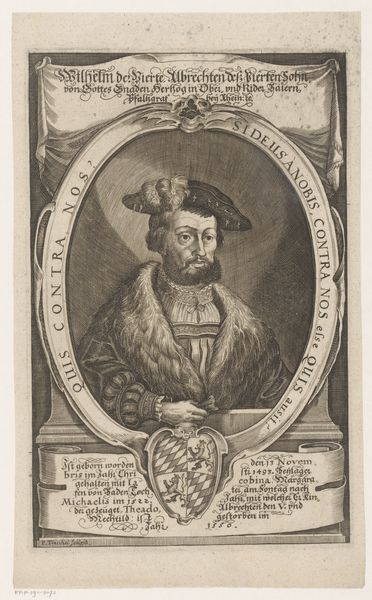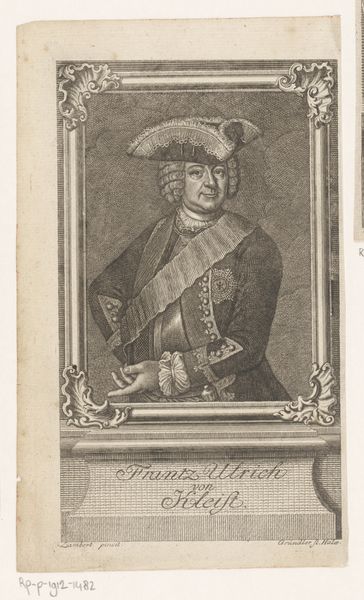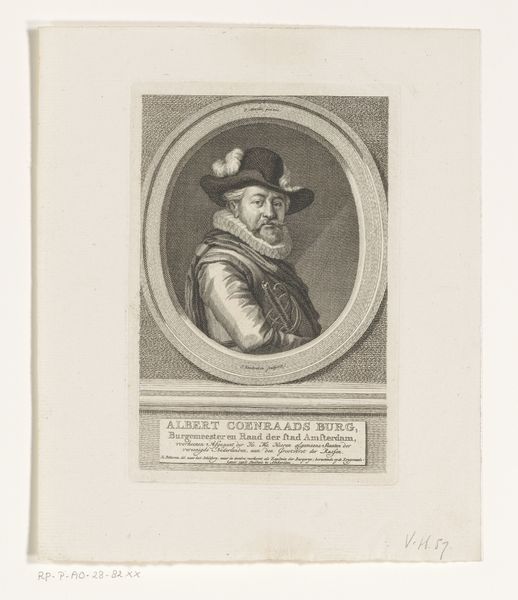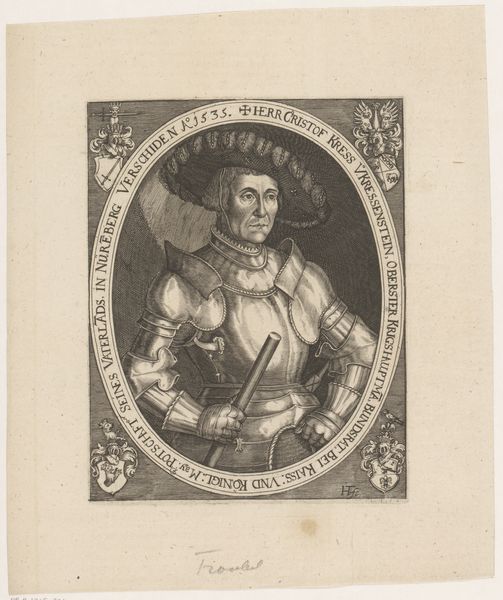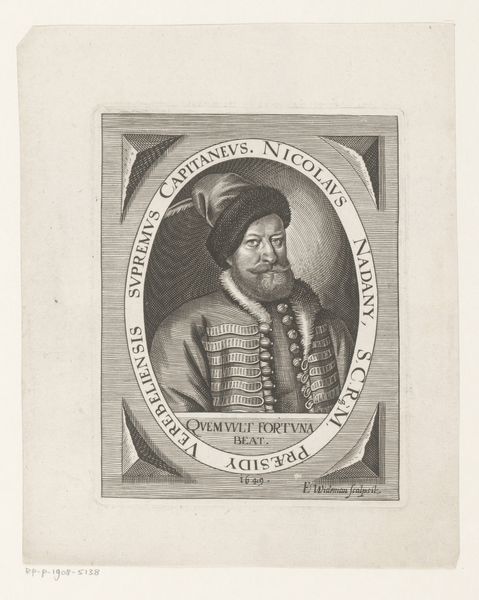
engraving
#
portrait
#
baroque
#
old engraving style
#
history-painting
#
engraving
Dimensions: height 145 mm, width 118 mm
Copyright: Rijks Museum: Open Domain
Elias Widemann made this portrait of Johannes Wurm around 1651 using engraving, a printmaking technique that demands precision and control. Look closely, and you'll see how the material of the copper plate influences the image. The fine lines, precisely incised with a tool called a burin, create details in Wurm's face, hair, and clothing. See how the varying depths and densities of the lines create shading and texture, bringing Wurm to life. The act of engraving, with its repetitive motions and focus on detail, carries a social significance. It reflects a society in which skilled craftsmanship was highly valued, with artisans like Widemann producing images for a growing market of consumers. The labor-intensive process speaks to the value placed on detailed handwork before industrialization. By understanding the materials, making process, and social context, we can appreciate the cultural value and historical importance of this engraved portrait, which challenges traditional distinctions between fine art and craft.
Comments
No comments
Be the first to comment and join the conversation on the ultimate creative platform.
